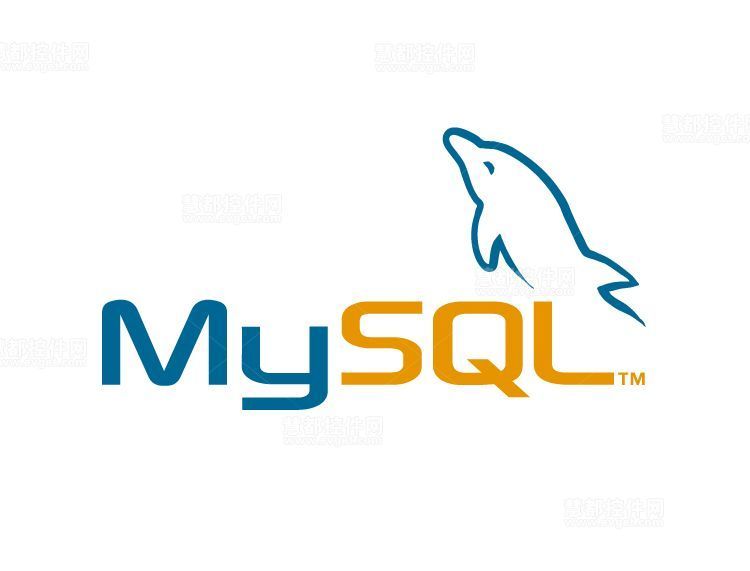Detailed introduction to data table operations
View table structure For a successfully created data table, you can use the SHOW COLUMNS statement or DESCRIBE statement to view the table structure of the specified data table. These two statements are introduced below. 1.SHOW COLUMNS statement The syntax format of the SHOW COLUMNS statement is as follows: SHOW [FULL]COLUMNS FROM data table name [FROM database name]; or SHOW [FULL]COLUMNS FROM data table name.database name; 2. DESCRIBE statement The syntax of DESCRIBE statement The format is as follows: DESCRIBE data table name; among them, DESCRIBE can be abbreviated as DESC. When viewing the table structure, you can also list only the information of a certain column. The syntax format is as follows: DESC data table name column name; rename the table using the RENAME TABLE statement. The syntax is as follows: RENAME TABLE data table name 1 to data table name 2; for example: change the admin table name to user, the format is as follows :rename table admin t
1. MySQL View, delete and rename data tables (MYSQL data table operation tutorial 3)

Introduction: View table structure For a successfully created data table, you can use the SHOW COLUMNS statement or DESCRIBE statement to view the table structure of the specified data table. These two statements are introduced below. 1.SHOW COLUMNS statement The syntax format of the SHOW COLUMNS statement is as follows: SHOW [FULL]COLUMNS FROM data table name [FRO
2. MySQL modifies the data table (MYSQL data table operation Tutorial 2)

Introduction: Modify the table structure Use the ALTER TABLE statement to modify the table structure. Modifying the table structure means adding or deleting fields, modifying field names or field types, setting or canceling primary keys and foreign keys, setting or canceling indexes, and modifying table comments, etc. The syntax format is as follows: ALTER[IGNORE] TABLE data table name alter_spec[,alter_spec]...;
3. MySQL creates a data table (MYSQL data table operation tutorial 1)

Introduction: Before operating the MySQL data table, you need to select the database first before you can operate in the specified database. Perform operations on the data table, such as creating a data table, modifying the table structure, renaming the data table, or deleting the data table, etc. Otherwise, the data table cannot be operated. Okay, let’s introduce the specific operations on the data table. Creating a data table Creating a data table is very similar to creating a database. The syntax format is:
4. Detailed explanation of MySQL data table operations

# Introduction: This article introduces what commands need to be used to operate the data tables in the database.
5. ThinkPHP’s data table operation_PHP tutorial
Introduction: ThinkPHP’s data table operation. Read data Read $m=new Model('User'); $m=M('User'); select $m->select();//Get all data and return it as an array find $m ->find($id);//Get a single piece of data getField(field name
6. ThinkPHP data table operation
Introduction: ThinkPHP data table operation. Reading data Read $m=new Model('User'); $m=M('User'); select $m->select(); //Get all data and return it as an array find $m->find($id); //Get a single piece of data getField(field name
7. sql database and data table operation statements
#Introduction: sql and data table operation statements This includes database creation, deletion, modification, backup, as well as creating new tables, deleting tables, adding table indexes, creating views, etc.; 1. Instructions: Create a database create database database-name 2. Description: Delete the database drop database dbname 3. Description: Back up sql server --- Create a device for backing up data use master exec sp_a
8. Data model class for secondary development of phpcms v9
Introduction: In the secondary development of phpcms v9, we often need to modify the module The data table can be used to query, add, modify and delete data. All these operations are inseparable from the data model class model.class.php, which plays an interactive role between developers and data tables. model.class.php encapsulates many data table operation methods. Basically, commonly used mysql operation statements can be found in it, but it is different from the original mysql statement. Like other PHP content management systems, PHPCMS also For the original mysq
9. Detailed explanation of data table operations in MySQLIntroduction: Using MySQL, you can currently use three basic databases Choose between table formats. When you create a table, you tell MySQL which table type it should use for the table. MySQL will always
10. MySQL commonly used data table operations SQL
Introduction: As a program developer, you often have to Import and export some data. Today I will share some SQL that I use to import and export data: All test statement data below use tablename 1. Export the table structure show create table tablename; 2. Export the data of a table to an external file select * into outfile '/tmp/data.txt' f
The above is the detailed content of Detailed introduction to data table operations. For more information, please follow other related articles on the PHP Chinese website!

Hot AI Tools

Undresser.AI Undress
AI-powered app for creating realistic nude photos

AI Clothes Remover
Online AI tool for removing clothes from photos.

Undress AI Tool
Undress images for free

Clothoff.io
AI clothes remover

Video Face Swap
Swap faces in any video effortlessly with our completely free AI face swap tool!

Hot Article

Hot Tools

Notepad++7.3.1
Easy-to-use and free code editor

SublimeText3 Chinese version
Chinese version, very easy to use

Zend Studio 13.0.1
Powerful PHP integrated development environment

Dreamweaver CS6
Visual web development tools

SublimeText3 Mac version
God-level code editing software (SublimeText3)

Hot Topics
 When might a full table scan be faster than using an index in MySQL?
Apr 09, 2025 am 12:05 AM
When might a full table scan be faster than using an index in MySQL?
Apr 09, 2025 am 12:05 AM
Full table scanning may be faster in MySQL than using indexes. Specific cases include: 1) the data volume is small; 2) when the query returns a large amount of data; 3) when the index column is not highly selective; 4) when the complex query. By analyzing query plans, optimizing indexes, avoiding over-index and regularly maintaining tables, you can make the best choices in practical applications.
 Can I install mysql on Windows 7
Apr 08, 2025 pm 03:21 PM
Can I install mysql on Windows 7
Apr 08, 2025 pm 03:21 PM
Yes, MySQL can be installed on Windows 7, and although Microsoft has stopped supporting Windows 7, MySQL is still compatible with it. However, the following points should be noted during the installation process: Download the MySQL installer for Windows. Select the appropriate version of MySQL (community or enterprise). Select the appropriate installation directory and character set during the installation process. Set the root user password and keep it properly. Connect to the database for testing. Note the compatibility and security issues on Windows 7, and it is recommended to upgrade to a supported operating system.
 Explain InnoDB Full-Text Search capabilities.
Apr 02, 2025 pm 06:09 PM
Explain InnoDB Full-Text Search capabilities.
Apr 02, 2025 pm 06:09 PM
InnoDB's full-text search capabilities are very powerful, which can significantly improve database query efficiency and ability to process large amounts of text data. 1) InnoDB implements full-text search through inverted indexing, supporting basic and advanced search queries. 2) Use MATCH and AGAINST keywords to search, support Boolean mode and phrase search. 3) Optimization methods include using word segmentation technology, periodic rebuilding of indexes and adjusting cache size to improve performance and accuracy.
 Difference between clustered index and non-clustered index (secondary index) in InnoDB.
Apr 02, 2025 pm 06:25 PM
Difference between clustered index and non-clustered index (secondary index) in InnoDB.
Apr 02, 2025 pm 06:25 PM
The difference between clustered index and non-clustered index is: 1. Clustered index stores data rows in the index structure, which is suitable for querying by primary key and range. 2. The non-clustered index stores index key values and pointers to data rows, and is suitable for non-primary key column queries.
 MySQL: Simple Concepts for Easy Learning
Apr 10, 2025 am 09:29 AM
MySQL: Simple Concepts for Easy Learning
Apr 10, 2025 am 09:29 AM
MySQL is an open source relational database management system. 1) Create database and tables: Use the CREATEDATABASE and CREATETABLE commands. 2) Basic operations: INSERT, UPDATE, DELETE and SELECT. 3) Advanced operations: JOIN, subquery and transaction processing. 4) Debugging skills: Check syntax, data type and permissions. 5) Optimization suggestions: Use indexes, avoid SELECT* and use transactions.
 The relationship between mysql user and database
Apr 08, 2025 pm 07:15 PM
The relationship between mysql user and database
Apr 08, 2025 pm 07:15 PM
In MySQL database, the relationship between the user and the database is defined by permissions and tables. The user has a username and password to access the database. Permissions are granted through the GRANT command, while the table is created by the CREATE TABLE command. To establish a relationship between a user and a database, you need to create a database, create a user, and then grant permissions.
 Explain different types of MySQL indexes (B-Tree, Hash, Full-text, Spatial).
Apr 02, 2025 pm 07:05 PM
Explain different types of MySQL indexes (B-Tree, Hash, Full-text, Spatial).
Apr 02, 2025 pm 07:05 PM
MySQL supports four index types: B-Tree, Hash, Full-text, and Spatial. 1.B-Tree index is suitable for equal value search, range query and sorting. 2. Hash index is suitable for equal value searches, but does not support range query and sorting. 3. Full-text index is used for full-text search and is suitable for processing large amounts of text data. 4. Spatial index is used for geospatial data query and is suitable for GIS applications.
 Can mysql and mariadb coexist
Apr 08, 2025 pm 02:27 PM
Can mysql and mariadb coexist
Apr 08, 2025 pm 02:27 PM
MySQL and MariaDB can coexist, but need to be configured with caution. The key is to allocate different port numbers and data directories to each database, and adjust parameters such as memory allocation and cache size. Connection pooling, application configuration, and version differences also need to be considered and need to be carefully tested and planned to avoid pitfalls. Running two databases simultaneously can cause performance problems in situations where resources are limited.






